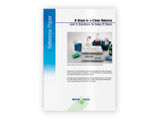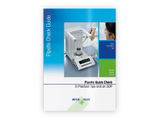To use all functions of this page, please activate cookies in your browser.
my.bionity.com
With an accout for my.bionity.com you can always see everything at a glance – and you can configure your own website and individual newsletter.
- My watch list
- My saved searches
- My saved topics
- My newsletter
Air strippingAir stripping is the transferring of volatile components of a liquid into an air stream. It is a chemical engineering technology used for the purification of groundwaters and wastewaters containing volatile compounds. Additional recommended knowledgeVolatile compounds have relatively high vapor pressure and low aqueous solubility characterized by the compound’s dimensionless Henry's law coefficient, which is the ratio of the concentration in air that is in equilibrium with its concentration in water. Pollutants with relatively high Henry’s Law coefficients can be economically stripped from water. These include BTEX compounds (benzene, toluene, ethylbenzene, and xylene found in gasoline, and solvents including trichloroethylene and tetrachloroethylene. Ammonia can also be stripped from wastewaters. Since Henry’s law coefficient increases with temperature, stripping is easier at warmer temperatures. Air StrippersAlthough any device that promotes contact between air and water strips some volatile compounds, air strippers are usually packed towers or tray towers operated with countercurrent flow of water and air. Packed towers, such as shown in Figure 1, usually use engineered or random plastic packings. Design criteria for packed towers include surface area provided by the packing, column height and diameter, and air to water flow rates. Since many of the compounds stripped are hazardous air pollutants, the air exiting a stripper may require emissions control. Carbon adsorption is often used and catalytic oxidation is another option. See alsoRecommended reading
|
| This article is licensed under the GNU Free Documentation License. It uses material from the Wikipedia article "Air_stripping". A list of authors is available in Wikipedia. |







